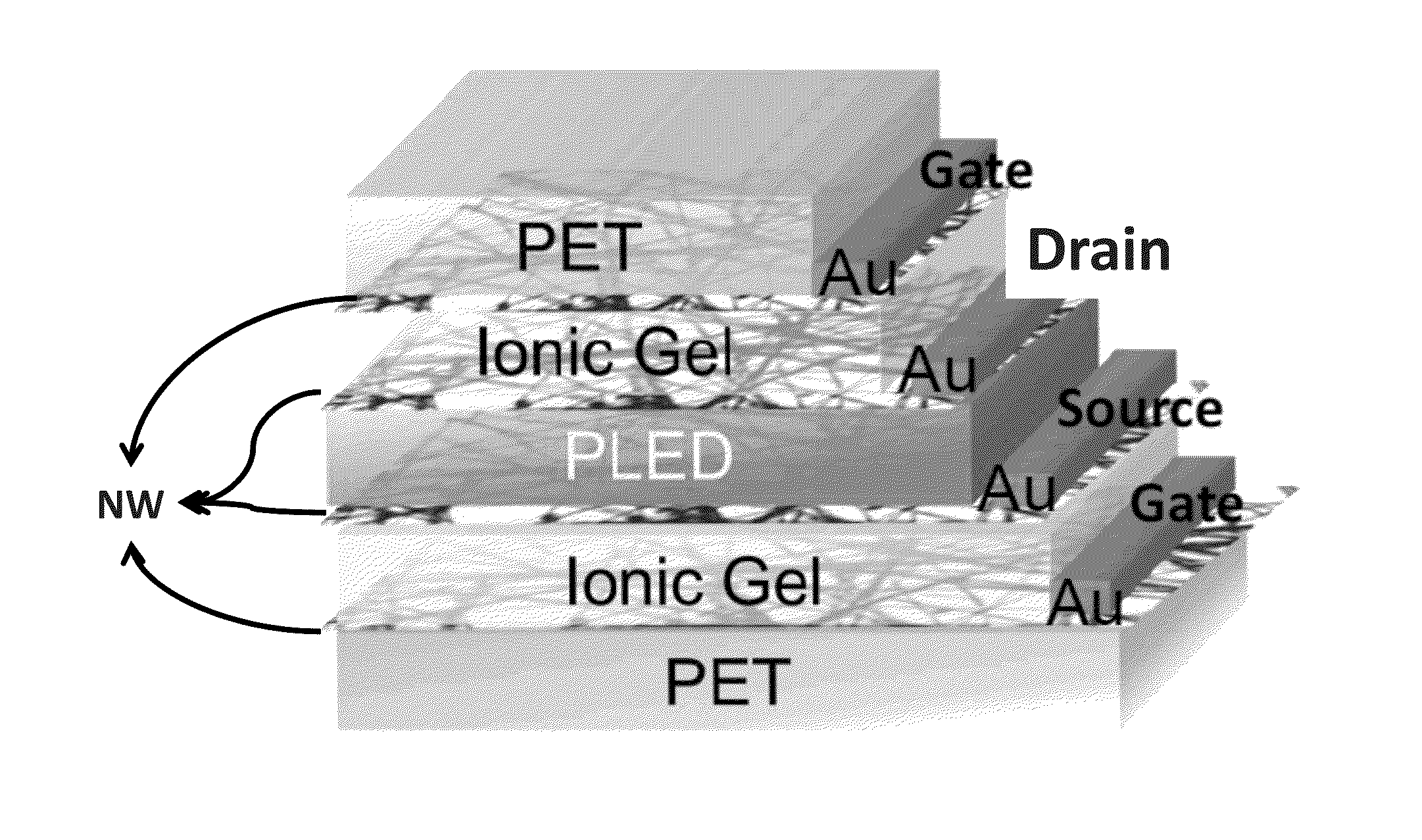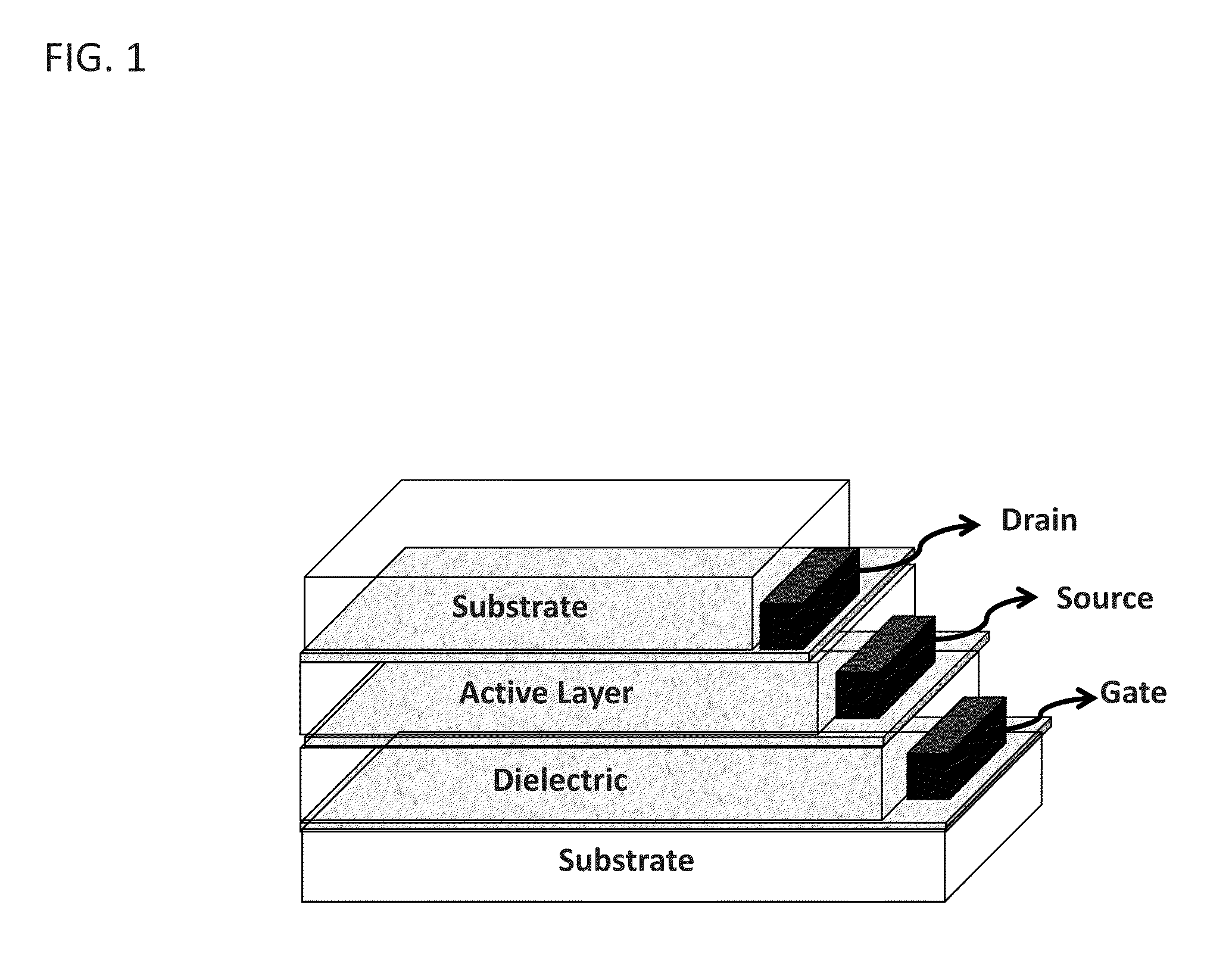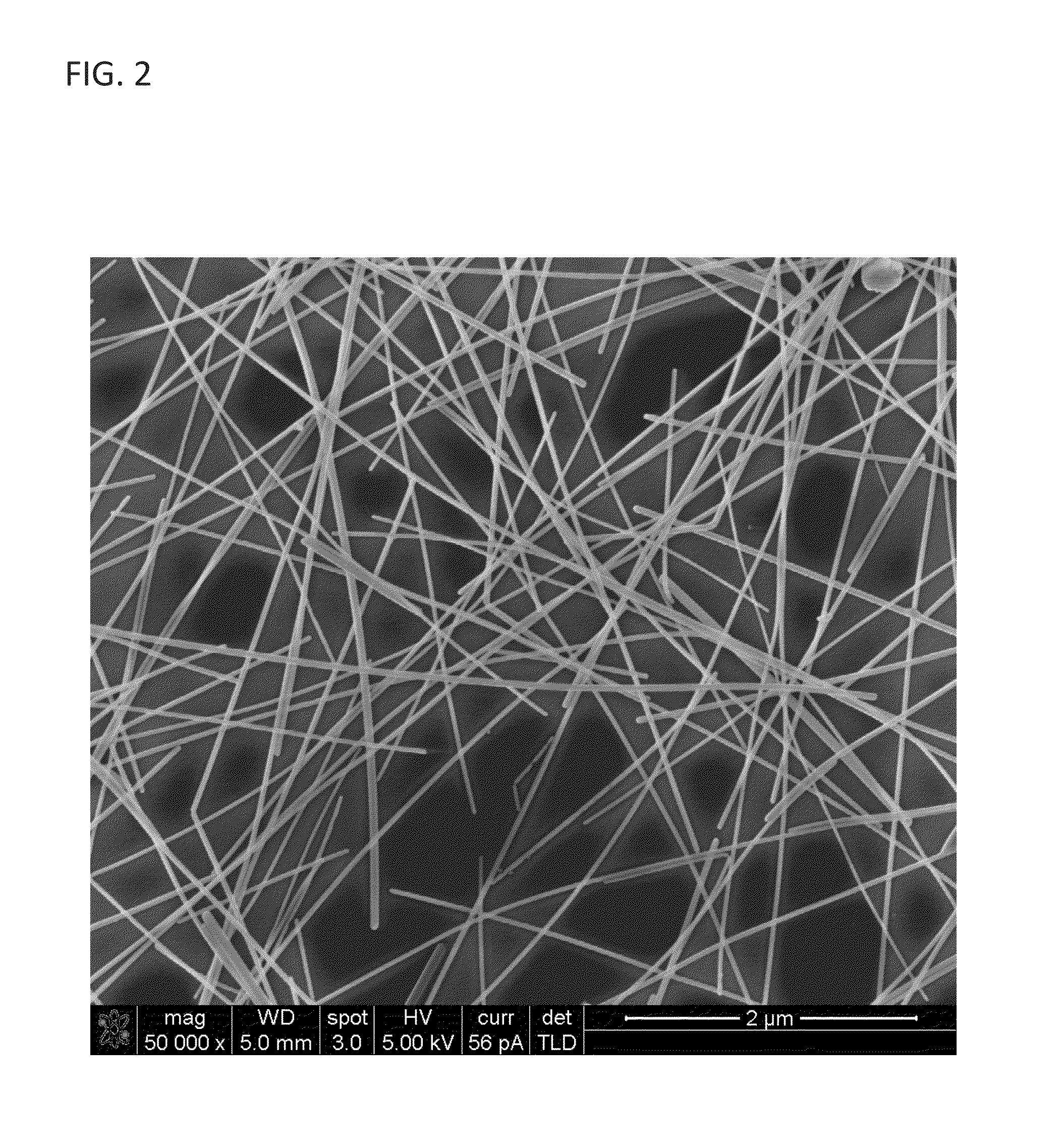Devices, Structures, Materials and Methods for Vertical Light Emitting Transistors and Light Emitting Displays
a technology of light-emitting transistors and devices, applied in the direction of thermoelectric device junction materials, semiconductor devices, electrical apparatus, etc., can solve the problems of poor stability, unsuitable amoled pixels, and the lik
- Summary
- Abstract
- Description
- Claims
- Application Information
AI Technical Summary
Benefits of technology
Problems solved by technology
Method used
Image
Examples
example 1
Spin Coating Ag NW Enabled VPLETs with Evaporated Dielectrics and Metal Gate Electrode on ITO
[0107]In one exemplary embodiment, shown schematically in FIG. 8, ITO was used as an anode and the transmission layer from which light from the light emitting cell may be emitted. A PEDOT / PSS (PH1000) was spin coated on the ITO at 2,000 rpm to serve as a drain electrode (D). After annealing at 140° C. for 10 minutes, super yellow THF solution was spin-coated at 5,000 rpm to form the PLED layer. On the top of super yellow layer (PLED), a 2 mg / mL Ag NW isopropanol solution was spin-coated at 2,000 rpm and reapplied for at least >5 times to form a conductive source electrode (S). Then a 200 nm thick silicon oxide was evaporated using low pressure chemical vapor deposition to form a dielectric layer. On top of the silicon oxide dielectric layer, 150 nm Al was sputter deposited using an electrode mask to form a gate electrode (G). The formed Ag NW enabled VPLETs were then characterized with a Kei...
example 2
Printing Ag NW Enabled VPLETs with ITO on Silicon Wafer
[0108]In one exemplary embodiment, printed Ag NW enabled VPLETs comprised of ITO as transparent porous conductive electrodes and light emitting polymers as channel materials on silicon wafer are provided. This process includes printing a uniform Ag NW network on silicon wafer, LEPs, and laminating PEDOT / PSS coated ITO with printed LEPs to achieve printed Ag NW enabled VPLETs with gate modulated brightness and external efficiency higher than PLEDs. Using aerosol jet printing technologies it is possible to print Ag NW networks on any substrate layer-by-layer allowing for the printing of a Ag NW enabled VPLET on silicon wafers of various SiO2 thickness.
[0109]LEPs (blue: PFO, green: super-yellow, red: MEH-PPV) have been fabricated into typical OLETs using thermal evaporated gold electrodes (70 nm thickness) with 20 μm channel length and 1000 μm channel width, and show a maximum power conversion efficiency of 0.002-0.005 Cd / A, an ext...
example 3
Printing Ag NW Enabled VPLETs with Ag NW Electrode on Si Wafer
[0111]In another embodiment, an aerosol jet printing technique is provided for printing Ag NW on flexible plastics such as polyethylene terephthalate (PET) to fabricate flexible transparent porous conductive electrodes. Printing uniform Ag NW on PET allows one to replace ITO. In a particular embodiment, printed Ag NW porous conductive electrodes will be spin-coated with PEDOT / PSS and then will be laminated with printed LEPs on Ag NW covered silicon wafer to achieve Ag NW enabled VPLETs with a Ag NW electrode on silicon wafer. Alternatively, it is possible to use the Ag NW stretchable electrode fabrication method described above. In one such method Ag NW is printed on the top of a substrate such as glass, and then in-situ polymerization is performed atop the Ag NW networks. The peeled-off polymer films are porous, transparent and conductive with the embedded Ag NWs.
[0112]As shown in FIGS. 10a and 10b, in this embodiment Ag...
PUM
 Login to View More
Login to View More Abstract
Description
Claims
Application Information
 Login to View More
Login to View More - R&D
- Intellectual Property
- Life Sciences
- Materials
- Tech Scout
- Unparalleled Data Quality
- Higher Quality Content
- 60% Fewer Hallucinations
Browse by: Latest US Patents, China's latest patents, Technical Efficacy Thesaurus, Application Domain, Technology Topic, Popular Technical Reports.
© 2025 PatSnap. All rights reserved.Legal|Privacy policy|Modern Slavery Act Transparency Statement|Sitemap|About US| Contact US: help@patsnap.com



